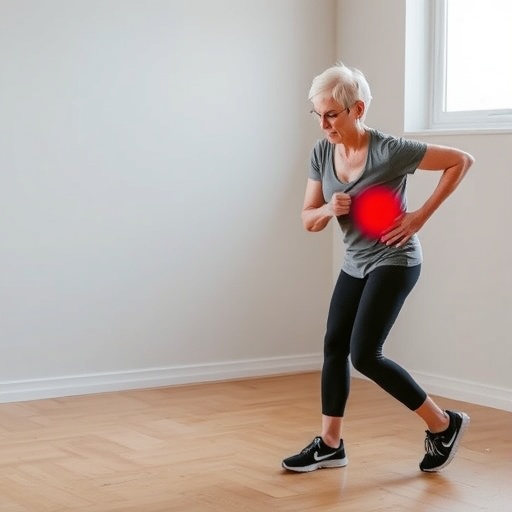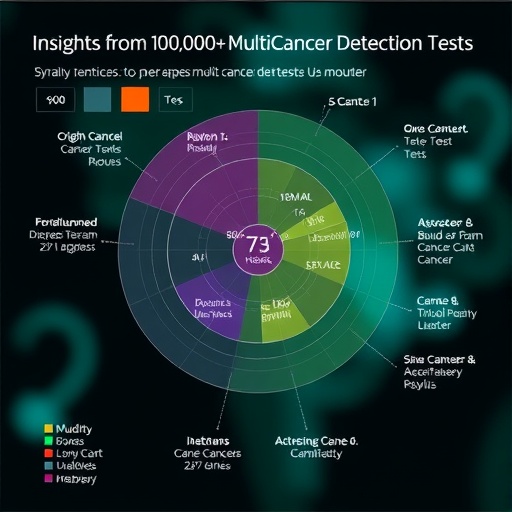Exploring the Benefits of Resistance and Tai Chi Exercises for Older Adults with Chronic Pain
Chronic pain is a pervasive issue that significantly impacts the quality of life, especially among older adults. In recent years, researchers have sought to identify non-pharmacological interventions that can effectively alleviate this burden. A groundbreaking study recently published in BMC Complementary Medicine and Therapies examines the effects of resistance exercise and Tai Chi on sensory, emotional, and cognitive dimensions of well-being for elderly individuals suffering from chronic pain in Japan. This study marks a pivotal step toward understanding how physical activity can be a powerful tool in managing chronic pain.
The study involved a diverse group of community-dwelling older adults, offering valuable insights into how exercise can be tailored to this population. Participants were engaged in both resistance training and Tai Chi, thereby allowing researchers to directly compare the sensory-emotional-cognitive outcomes associated with each exercise modality. This comparison is particularly salient as it addresses an often-overlooked area of chronic pain management—the interplay between physical activity and mental well-being.
Resistance training has long been acknowledged for its physical benefits, including improved muscle strength and joint function. However, its sensory-emotional effects remain underexplored. Participants in the study reported notable enhancements in emotional stability and cognitive sharpness, suggesting that engaging in resistance exercises fosters not only physical resilience but also psychological well-being. This dual benefit is critical as many older adults face both physical limitations and emotional challenges due to chronic pain.
Tai Chi, an ancient Chinese martial art that combines slow, deliberate movements with deep breathing, provides a contrasting approach to exercise. Widely studied for its benefits in promoting relaxation and mindfulness, Tai Chi also supports physical health by improving balance and flexibility. In the context of chronic pain, the meditative aspects of Tai Chi may offer unique sensory-emotional benefits. The study found that participants practicing Tai Chi displayed significant improvements in mood and cognitive function, highlighting its holistic approach to health and well-being.
The non-randomized controlled trial design utilized in this research provides a pragmatic framework for understanding real-world applications of these exercises. While randomization often strengthens study findings, a non-randomized approach allows for a more authentic depiction of how older adults might engage with these exercise modalities in everyday life. Participants were able to choose which exercise they preferred, thereby fostering a sense of autonomy, which is crucial for adherence to exercise regimens.
Pain perception and response are highly subjective experiences influenced by various psychosocial factors. This study emphasizes the importance of a biopsychosocial model of pain management. By integrating sensory-emotional dimensions with physical exercise, the researchers elucidate the multifaceted nature of chronic pain. This approach suggests that interventions addressing both body and mind can lead to more comprehensive strategies for pain management.
Results from this study may also have implications for healthcare policies targeting elderly populations. As societies grapple with aging populations, the economic burden of chronic pain cannot be overlooked. Non-invasive, cost-effective interventions like resistance training and Tai Chi could serve as primary or adjunct treatments for managing chronic pain, thus potentially reducing healthcare expenditures while improving quality of life. Policymakers and healthcare providers will need to consider these findings in the context of developing community health initiatives that promote physical activity among older adults.
The psychological dimensions of chronic pain cannot be underestimated. Participants who engaged in these forms of exercise reported significant improvements in their overall emotional state. Regular physical activity is known to stimulate the release of endorphins, natural mood lifters that can also help diminish pain perception. The emotional responses observed in this study underscore the interplay between physical activity, mental health, and chronic pain, a triad that is critical for effective pain management strategies.
Moreover, the cognitive benefits observed in both exercise groups reveal an encouraging picture for older adults. As cognitive decline is a common concern as one ages, any intervention that supports cognitive health is valuable. Participants indicated improved concentration and memory, suggesting that exercise can be a multifaceted approach to enhance overall brain health, thereby challenging the traditional narrative that aging inevitably leads to decline in these areas.
While the study illustrates the advantages of both resistance training and Tai Chi, it also opens the door for future inquiries. Further research is warranted to explore the potential synergistic effects of combining these two modalities, as well as the long-term implications of regular participation in such activities. Understanding the optimal frequency, intensity, and duration of exercise can help maximize benefits and assist in formulating guidelines for practitioners working with older adults.
Importantly, adherence to exercise is a common hurdle in any intervention study. The qualitative feedback from participants highlights how personal interests and preferences impact engagement. Future studies should delve deeper into the motivations behind exercise choices, enabling a more tailored approach to exercise recommendations that resonate with individual preferences. By prioritizing personalization in exercise interventions, adherence rates could significantly increase, leading to sustained improvements in overall health.
In conclusion, the exploration of sensory-emotional-cognitive effects of resistance exercise and Tai Chi among older adults with chronic pain showcases the vast potential of non-pharmacological interventions in pain management. By focusing on the multifaceted nature of chronic pain and the role of physical activity in enhancing quality of life, researchers have opened new pathways for understanding and addressing the needs of this demographic. As the health community continues to navigate the challenges of chronic pain, integrating exercise into treatment protocols emerges as a promising strategy that deserves both attention and implementation.
The implications of this study are numerous and far-reaching. It challenges healthcare providers to reconsider current treatment paradigms that may rely heavily on pharmacological approaches. Instead, the addition of exercise as a complementary strategy could lead to breakthroughs in managing chronic pain among older adults. The invigorating evidence gathered could catalyze a movement towards a more holistic understanding of pain management, one that sees physical, emotional, and cognitive health as intertwined and essential to fostering well-being in later life.
Such research serves as a reminder of the resilience found in the human body and mind. While chronic pain may impose limitations, embracing an active lifestyle through exercises such as resistance training and Tai Chi can empower older adults. By intimately connecting the dots between physical activity and overall well-being, the study provides a hopeful lens through which we can view the capabilities of older adults in managing chronic pain effectively.
Subject of Research: The sensory-emotional-cognitive effects of resistance exercise and Tai Chi in chronic pain management for older adults.
Article Title: Sensory-emotional-cognitive effects of resistance exercise and Tai Chi exercise in Japanese community-dwelling older adults with chronic pain: a non-randomized controlled trial.
Article References:
Chen, C., Saito, T., Wang, L. et al. Sensory-emotional-cognitive effects of resistance exercise and Tai Chi exercise in Japanese community-dwelling older adults with chronic pain: a non-randomized controlled trial.
BMC Complement Med Ther 25, 367 (2025). https://doi.org/10.1186/s12906-025-05100-9
Image Credits: AI Generated
DOI:
Keywords: Chronic pain, Resistance training, Tai Chi, Older adults, Cognitive function, Emotional health, Non-pharmacological interventions, Quality of life.
Tags: benefits of resistance training for older adultscommunity-dwelling older adults healthexercise modalities for elderlyimpact of exercise on chronic painmanaging chronic pain in older adultsnon-pharmacological interventions for chronic painphysical activity and mental health in seniorsresistance exercise benefits for elderlysensory emotional cognitive well-being in seniorsTai Chi effects on older adultsTai Chi for elderly pain reliefunderstanding pain management through exercise





